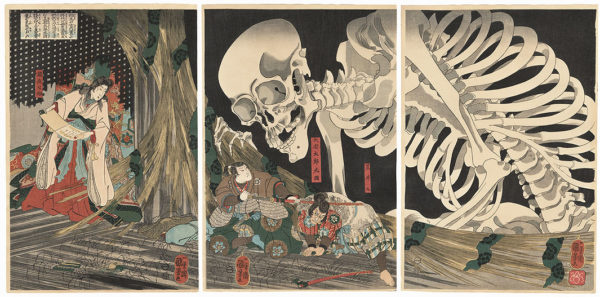When Dungeon Adventures first started publication and I set my sights on publishing an adventure with that magazine not long after. I had played TSR’s Oriental Adventures in college and had run FGU’s Bushido, so the logical dovetailing of these experiences with my Japanese Studies degree was to write an adventure using the OA setting. In due course, the editors at Dungeon Adventures responded to my query letter with the green light to submit a full-length adventure for their consideration.
The adventure I authored, The Lost Temple of Takako Province, was… not great. Looking back at a remove of several decades, it’s pretty clear to me some of the major reasons that the editors rejected it. It wasn’t badly written and the map I created was quite serviceable. It was just rather lackluster. It lacked depth, it didn’t tell a compelling story, the playing time was short compared to the length of the adventure, and it failed to build any sense of suspense.
What I wrote pre-dated some of the influences that I would have happily drawn on. For example, there’s a scene in Koji Suzuki’s novel Ring (Ringu) where the main characters visit the holiday resort together to find the well where Sadako is buried. The atmosphere of the setting combined with the culmination of the investigations is deeply unsettling. Had I had the opportunity to read material like that, finding the temple would have been part of the adventure and the approach there the culmination of that investigation rather than the adventure starting point.
If I had done more research, I would have learned much more about youkai instead of just relying on the prevalent bakemono and their kin as they existed in the rulebook. The ultimate enemy the group was to encounter was a goblin spider, a rather lackluster choice, though I chose it for an appropriate Challenge Rating and it’s mimicry abilities. The inhabitants of the temple building should have been an opportunity to introduce a few new creatures that would have rounded out the atmosphere and kept the characters off-balance on how to deal with the final encounters. The flow of the adventure was fairly linear with the players getting to the main temple after contending with some somewhat treacherous terrain and a few random encounters. The interior of the temple was a fairly standard sweep-and-clear with encounters varying based on how stealthily or quickly the adventures made their way through it. Overall, I think my inspiration for the flow was the TSR adventure Secret of the Slaver’s Stockade (A2), which remains a favorite of mine to this day, but not the best template for the adventure I wanted to create.
The book Anno Dracula – One Thousand Monsters by Kim Newman is what got me really thinking about this old work of mine. Quite simply, Oriental Adventures was a mess of different Asian cultures and some very confusing generalizations. Many things were simplified or dropped in order to be playable in the D&D game system. Other systems weren’t much better with the likes of FGU’s Land of the Rising Sun where the creatures feel more like reskinned versions of the beasts and Arthurian creatures from the Chivalry & Sorcery. Part of it is an issue of time period where newer eras are grafted on to an older time and part is an issue of the same failure I made which is to research the setting in sufficient death. So whereas Bushido classes youkai as apparitions and, therefore, a sub-category of yurei (ghosts), I think the consensus is that youkai is a catch-all for every kind of strange creature, be it ghosts, bakemono, kami, or animate objects in the sense the term was used during the Edo Period. Which is certainly reasonable if you’re incorporating something like Le Morte d’Arthur into your pseudo-European fantasy campaign. I think it would be great to run adventures with a flaming cart wheel or a giant skeleton.
